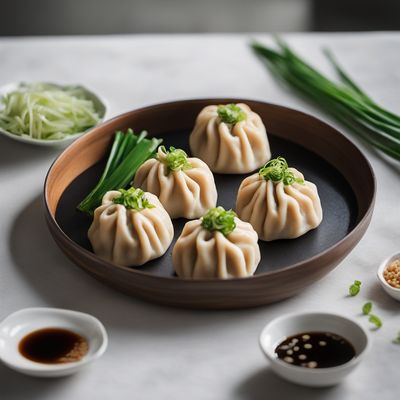
Recipe
Bolivian-Style Stuffed Buns
Andean Delights: Bolivian Stuffed Buns with a Twist
4.8 out of 5
Indulge in the flavors of Bolivian cuisine with these delightful Bolivian-style stuffed buns. Inspired by the traditional Chinese dish, Baozi, this recipe combines the essence of Bolivian flavors and ingredients to create a unique and mouthwatering treat.
Metadata
Preparation time
30 minutes
Cooking time
20 minutes
Total time
50 minutes
Yields
4 servings
Preparation difficulty
Medium
Suitable for
Omnivore, Gluten-free (with appropriate flour substitution), Dairy-free, Nut-free, Low-fat
Allergens
Wheat (gluten), Garlic, Onion
Not suitable for
Vegan, Vegetarian, Paleo, Keto, High-protein
Ingredients
While the original Chinese Baozi is typically filled with ingredients like pork, vegetables, or seafood, the Bolivian-style stuffed buns take a different approach. The filling for these buns incorporates traditional Bolivian ingredients such as quinoa, potatoes, llama meat, and a variety of Andean spices. This adaptation infuses the buns with the unique flavors and culinary heritage of Bolivia. We alse have the original recipe for Baozi, so you can check it out.
-
2 cups (240g) all-purpose flour 2 cups (240g) all-purpose flour
-
1 teaspoon (5g) instant yeast 1 teaspoon (5g) instant yeast
-
1 tablespoon (12g) sugar 1 tablespoon (12g) sugar
-
1/2 teaspoon (3g) salt 1/2 teaspoon (3g) salt
-
1/2 cup (120ml) warm water 1/2 cup (120ml) warm water
-
1 tablespoon (15ml) vegetable oil 1 tablespoon (15ml) vegetable oil
-
1/2 cup (90g) cooked quinoa 1/2 cup (90g) cooked quinoa
-
1/2 cup (75g) cooked and mashed potatoes 1/2 cup (75g) cooked and mashed potatoes
-
1/2 cup (100g) cooked and shredded llama meat (can be substituted with beef or chicken) 1/2 cup (100g) cooked and shredded llama meat (can be substituted with beef or chicken)
-
1/4 cup (40g) finely chopped onion 1/4 cup (40g) finely chopped onion
-
2 cloves garlic, minced 2 cloves garlic, minced
-
1 teaspoon (5g) ground cumin 1 teaspoon (5g) ground cumin
-
1/2 teaspoon (2g) paprika 1/2 teaspoon (2g) paprika
-
Salt and pepper to taste Salt and pepper to taste
Nutrition
- Calories (kcal / KJ): 320 kcal / 1340 KJ
- Fat (total, saturated): 8g, 2g
- Carbohydrates (total, sugars): 50g, 3g
- Protein: 12g
- Fiber: 4g
- Salt: 1g
Preparation
-
1.In a large mixing bowl, combine the flour, instant yeast, sugar, and salt. Mix well.
-
2.Gradually add the warm water and vegetable oil to the dry ingredients. Stir until a dough forms.
-
3.Transfer the dough to a lightly floured surface and knead for about 5 minutes, or until the dough becomes smooth and elastic.
-
4.Place the dough in a greased bowl, cover with a damp cloth, and let it rise in a warm place for about 1 hour, or until it doubles in size.
-
5.In the meantime, prepare the filling. In a skillet, heat some oil over medium heat and sauté the onion and garlic until translucent.
-
6.Add the cooked quinoa, mashed potatoes, shredded llama meat, ground cumin, paprika, salt, and pepper to the skillet. Mix well and cook for another 5 minutes. Remove from heat and let the filling cool.
-
7.Once the dough has risen, punch it down and divide it into small balls, about the size of a golf ball.
-
8.Flatten each ball with your hands or a rolling pin to form a small circle. Place a spoonful of the filling in the center of each circle.
-
9.Gather the edges of the dough and pinch them together to seal the filling inside, forming a bun shape.
-
10.Place the stuffed buns on a steamer lined with parchment paper, leaving some space between them to allow for expansion. Cover and let them rest for 15 minutes.
-
11.Steam the buns over high heat for 15-20 minutes, or until they are cooked through and the dough is fluffy.
-
12.Remove the buns from the steamer and let them cool slightly before serving.
Treat your ingredients with care...
- Quinoa — Make sure to rinse the quinoa thoroughly before cooking to remove any bitterness.
- Llama meat — If llama meat is not available, you can substitute it with beef or chicken for a similar flavor profile.
Tips & Tricks
- To enhance the flavors, you can add a pinch of Bolivian chili powder or aji amarillo paste to the filling.
- If you prefer a spicier version, you can serve the buns with a side of llajwa, a Bolivian spicy sauce made with tomatoes, chili peppers, and herbs.
- These stuffed buns can be made ahead of time and reheated in a steamer or microwave before serving.
- Experiment with different fillings using traditional Bolivian ingredients such as chuño (freeze-dried potatoes) or charque (dried meat).
- Serve the Bolivian-style stuffed buns as a main course accompanied by a fresh salad or as a snack during social gatherings.
Serving advice
Serve the Bolivian-style stuffed buns warm as a delicious and satisfying meal. They can be enjoyed on their own or paired with llajwa sauce for an extra kick of flavor.
Presentation advice
Arrange the Bolivian-style stuffed buns on a platter, garnished with fresh herbs such as cilantro or parsley. The vibrant colors of the filling will make the buns visually appealing and inviting.
More recipes...
For Chinese cuisine » Browse all
More Chinese cuisine dishes » Browse all

Nai huang bao
Nai huang bao is a Chinese steamed bun that is filled with a sweet custard made from milk and eggs.
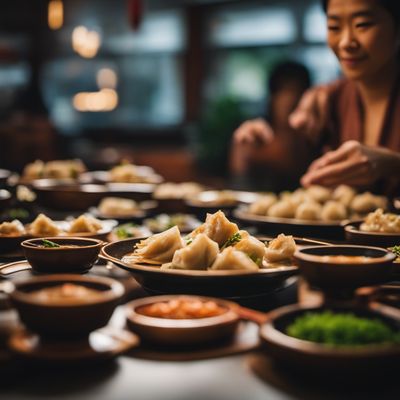
Guotie
Guotie, also known as potstickers, is a traditional Chinese dish that is typically served as an appetizer. It is a popular dish that is enjoyed by...
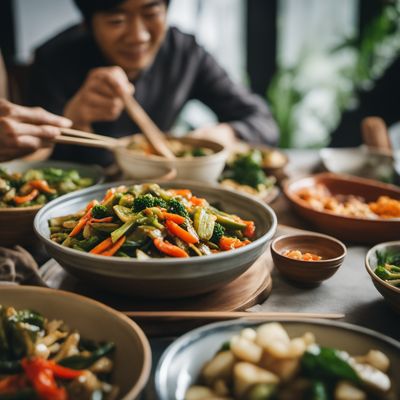
Qiang xi nan hua cai
Stir-Fried Southern Style Vegetables
Qiang xi nan hua cai is a Chinese dish made with stir-fried vegetables that are seasoned with garlic, ginger, and soy sauce. It is a popular dish...
More Bolivian cuisine dishes » Browse all
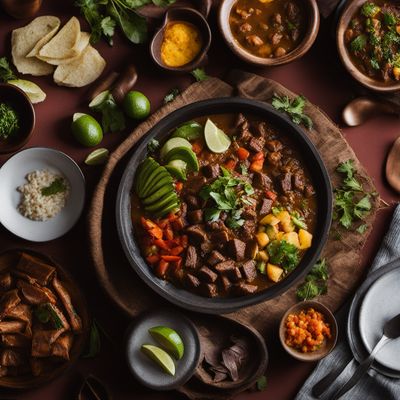
Pampaku
Pampaku is a delicious and hearty Peruvian dish that is perfect for any occasion. This dish is made with tender beef or lamb that is slow-cooked...
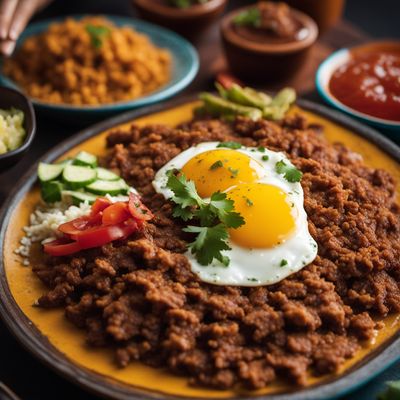
Silpancho
Silpancho is a traditional Bolivian dish that is made with thin slices of beef that are breaded and fried until crispy. The beef is typically...

Cuñape
Cuñape is a traditional Bolivian snack made from cassava flour and cheese. It is a popular street food and is often served with aji sauce.
